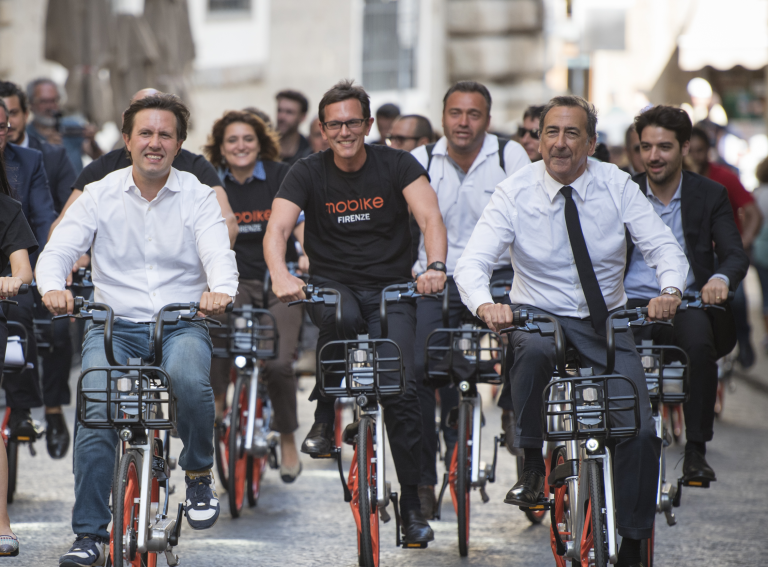In 2020, Tamy Ribeiro Sass received a European Tech Women Award from the British Government.
Having been active in the mobility sector since 2016, the Department for International Trade looked to Tamy for her extensive work in the industry when it awarded her the ‘Future of Mobility’ category.
Now, she’s Chief Revenue Officer of B2B SaaS platform goUrban, and she has a lot to share from her last few years in the shared mobility industry.
Zag Daily: In 2020, you gave a TEDx talk titled ‘Micromobilty in cities: let your children make your money’. What do you mean by this?
Tamy: “It’s an analogy which uses parents and children to represent cities and rebel micromobility startups, and it’s about the importance of clear communication and education to achieve something good for both sides. As parents, we simply sometimes say no because we’re the adults and we want to make the decision – this would be the cities. But sometimes the kids have a point and they want to explain it but we don’t give them the option to. The goal of this TEDx talk was to show that cities should be open to listening to ‘rebels’ because these rebel startups have a goal which can boost cities’ economic development and improve quality of life for generations to come. Both parties should guide each other to find a transport solution that’s most interesting and beneficial for the city.”
Zag Daily: So micromobility is seen as a “rebel”?
Tamy: “Back then it was. The technology has evolved a lot since then and now we have processes and technology to make sure that vehicles are parked in designated areas, for example. But before companies and especially scooter sharing providers were just throwing their scooters around on the street. There was no technology to define where to park, where to start a ride or end one, and scooters were sometimes unorganised or blocking pedestrian areas. At that time, cities perceived scooter sharing as a bad solution and citizens did too. That’s what I covered in my TEDx talk – the need for cities to understand and be able to educate citizens on why this could be an important solution, and how to organise the operations. And we got there. Now, there are serious permits, areas to start and end rides, and operators can’t just leave their vehicles lying around. It’s much more organised.”
Zag Daily: What do you think is the biggest challenge for shared micromobility today?
Tamy: “I think that regulations and the pace of city authorities get better with time, but there’s still a lot of room for improvement. Operators can be negotiating with cities about something for three years and then they change the mayor, and the project manager has changed too, and everything starts again from scratch. Cities need to change regulations to address this because, sometimes, it’s a long bureaucratic process which makes it difficult to make things happen.
“Something else that needs to be urgently fixed is cities wanting to profit off operators. Until two or three years ago there was a huge boom in VC funding and startups wanted to grow at any cost. Cities then saw an opportunity to try and make a profit off of them, but this delayed operators’ path to profitability. This shouldn’t be the case because shared transport is part of a city’s mobility ecosystem – cities pay public transport operators to operate so why do they try to make money from shared micromobility operators? Today, it’s key for operators to focus on profitable sustainable businesses, not growth, and we’re seeing more startups say no to these cities who are trying to implement super high licence fees. But we can already see that many cities understand this, and are starting to adapt to it too.”
Zag Daily: What does goUrban do?
Tamy: “goUrban is a SaaS white label solution with an all-in-one technology offering one service app for free floating vehicles, corporate car sharing, pre-booking, multimodality, bikes, cars, or whatever an operator may want. The all-in-one package means you don’t need to use different technologies for each service, and it’s a global technology that covers cities all around the world. It’s something very special in the shared transport market which addresses the industry needs to reach profitability and identify new revenue streams.”
Zag Daily: Where do you think SaaS works best for micromobility?
Tamy: “One city that I was really impressed with when I started at goUrban was Vienna. Somehow, the city just learned how to use SaaS properly. And it’s not just SaaS but so many other different types of mobility solutions too. Vienna strategically mixes the technology with physical space. If you go to the city today, you’ll see micromobility parking areas in almost every single corner, or spots near the sidewalk, or perhaps a converted car parking space. Sometimes cities implement virtual stations randomly, but if a user uses a vehicle and then loses five minutes looking for a place to park, they’ll never ride again. It needs to be a seamless experience and this concept of knowing that I will go to the corner and find a parking space is a fundamental part of this seamless mobility user experience.”
Zag Daily: Who is one woman in the sector you would like to spotlight?
Tamy: “I think we have many great female leaders in the sector today and it would be unfair to mention only one. Some names that cross my mind who inspired me in the last years are: Vanessa Govi from Ayvens, Tekedra Mawakana from Waymo, Hildegard Wortmann from Audi, Andrea Kollmorgen from SIMULYTIC, Brigitte Courtehoux from Free2Move, and Katharina Hopp from Bosch, just to mention a few ….”





